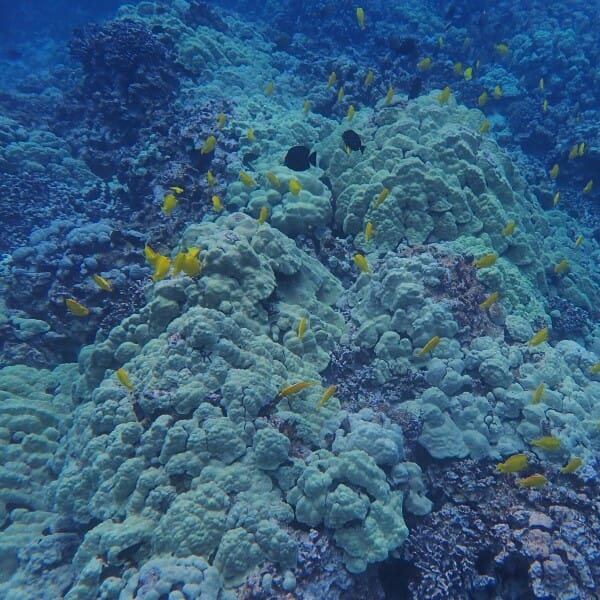
When people think of coral reefs, images of beautiful colors and structures come to mind. But beyond aesthetic pleasure, coral reefs provide numerous benefits, ranging from food security and coastline protection to their role in coastal traditions and cultures. Although reefs cover less than 1% of the ocean floor, they support about 25% of marine life and earn their nickname: the rainforests of the sea.
A major challenge to reefs today is whether corals can persist under changing climate. One way that climate affects corals is by stimulating the overgrowth of algae that can smother the reef, making life tough for new corals to survive.
To better understand the balance between coral and algae, postdoc Shawna Foo and Global Futures Scientist Greg Asner at Arizona State University’s Center for Global Discovery and Conservation Science explored the role of herbivorous fish in keeping check on one of the main antagonists in coral-algae fight for reef space, known as “turf algae.” Their findings were published on Aug. 9 in Coral Reefs, the Journal of the International Coral Reef Society.
Read more on ASU News. The abstract follows.
Herbivorous fish are key to maintaining a balance between coral and algae on reefs, where reefs with greater herbivore biomass often show lower algal cover. For reefs worldwide, algal turf cover is expanding and is increasingly used as an indicator of disturbance. Water depth affects reef fish composition; thus, it may be expected that herbivory could also differ by depth. We examined relationships between algal turf cover and biomass (g m−2), density (# m−2) and size (cm) of herbivore groups (grazers, browsers and scrapers) across shallow (< 6 m), mid (6–18 m) and deep (18–30 m) coral reefs in the Main Hawaiian Islands. We find that across all depth classes, algal turf cover decreased with increasing grazer and scraper density, with steeper relationships observed at mid and deep reefs than in shallow reefs. In contrast, algal turf cover slightly increased with increasing grazer and browser biomass at deep reefs. Considering fish size, algal turf cover increased with larger grazer and scrapers at mid and deep reefs. The results indicate that herbivorous fish density, rather than biomass, is a better indicator of reductions in algal turf cover and resulting coral-algal balance on Hawaiian reefs, where smaller fish exert greater top-down control on cover than larger fish. Despite significant differences in herbivorous fish compositions, length-frequency distributions and fishing intensities across depth, algal turf cover remains similar across depths. Increases in fishing would have a disproportionately negative impact in deep than shallow reefs due to a lower overall fish density, where grazing functions in deep reefs are maintained by significantly fewer and smaller grazers and browsers, and larger scrapers, than in shallow reefs. Developing an understanding of patterns of algal turf herbivory by depth is important to understanding the spatial scale at which herbivory and regime shifts operate.